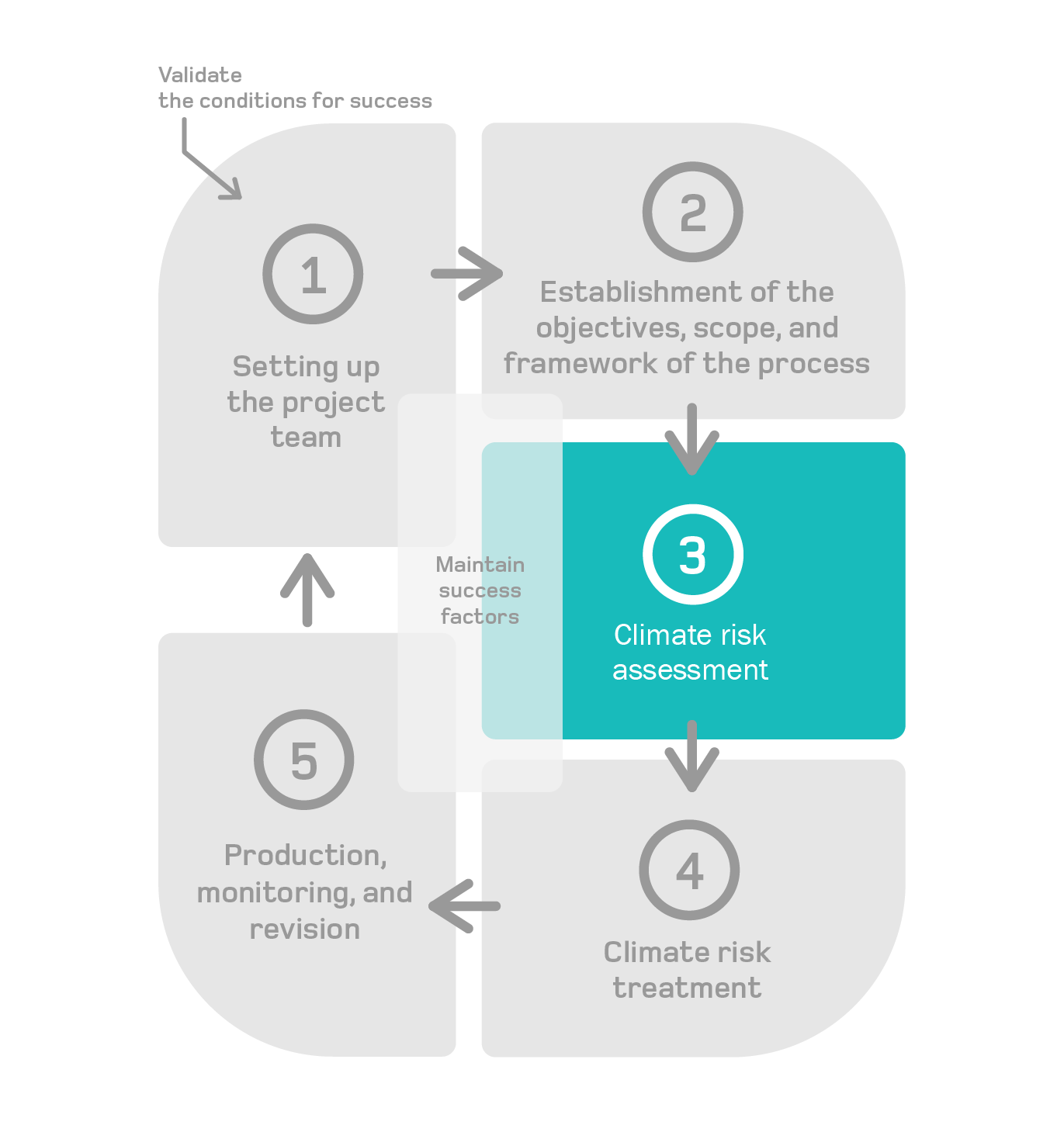Understanding Adaptation Science
Climate risk assessment is a key step in the adaptation process. It involves identifying all the climate risks that an organization may face. It is used to rank risks by priority in order to plan the adaptation measures to address them.
What is a risk?
A risk is the potential harm resulting from the exposure of a vulnerable human or natural system to a climate hazard. Risk (R) is the combination of the likelihood (L) of a hazard and its consequences (C).
Calculating risk: R = L x C
Likelihood: chance that a hazard will occur, which can be expressed qualitatively or quantitatively.
Consequences: harm, damage or benefit to the natural and human systems affected, should the hazard occur.
Framing the process
Before starting to assess climate risks, it’s important to establish the spatial and temporal limits of the adaptation process and to characterize the key elements that will be required for the next steps.
This includes:
profiling the organization and its territory
defining the systems that could be affected by climate change
identifying climate hazards that may impact these systems
The main steps in climate risk assessment
Climate risk assessment involves three sub-steps:
Identification
Analysis
Evaluation
Identifying risks
Risk identification involves determining which systems and components are exposed to climate change and vulnerable to it. Those identified are kept for the next steps, while the others are set aside.
Here are some examples of systems and components.
Systems | Components |
Road network | Traffic lanes |
Bridges, culverts, tunnels | |
Buildings | Foundations |
Building envelopes | |
Roofing | |
Population | Residents |
Municipal workers |
Analyzing risks
Risk analysis involves establishing, for each exposed and vulnerable element, the likelihood (L) of a hazard occurring and the severity (C) of its potential consequences.
These two values, together, establish the amount of risk (R) associated with that element. This risk analysis should be carried out over several time horizons (current and future), and using different greenhouse gas emission scenarios.

Figure 2: Climate risk assessment, the third stage of the adaptation process
Assessing risks
Risk assessment involves ranking all of these risks in order of seriousness, in accordance with the values that were established previously. This highlights the risks that should be addressed first, based on the level of urgency, the resources available, the objectives being pursued, etc.
Overview of climate risk treatment
The ranked list of climate risks is used to plan for the implementation of solutions to address the risks. In general, major and extreme risks should be considered in priority over negligible or minor risks when implementing adaptation measures. However, a lower risk could be prioritized over a greater risk depending on the objectives pursued, the funding opportunities, the available resources, etc.
